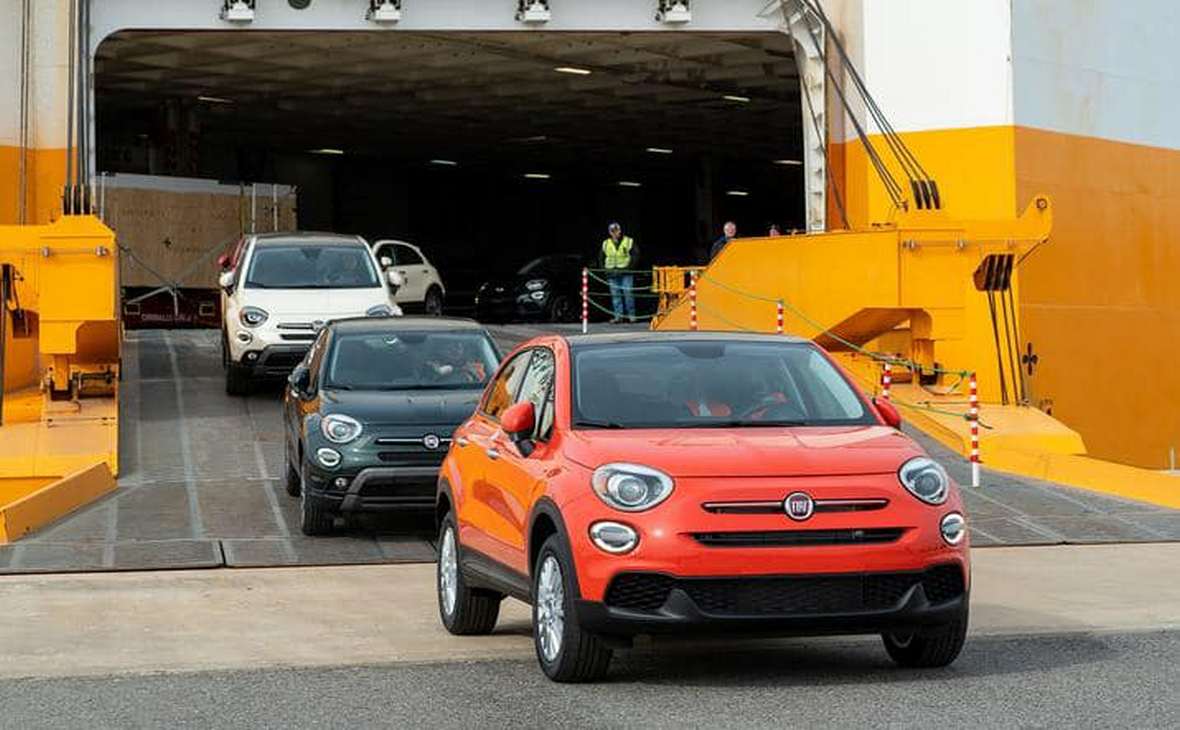
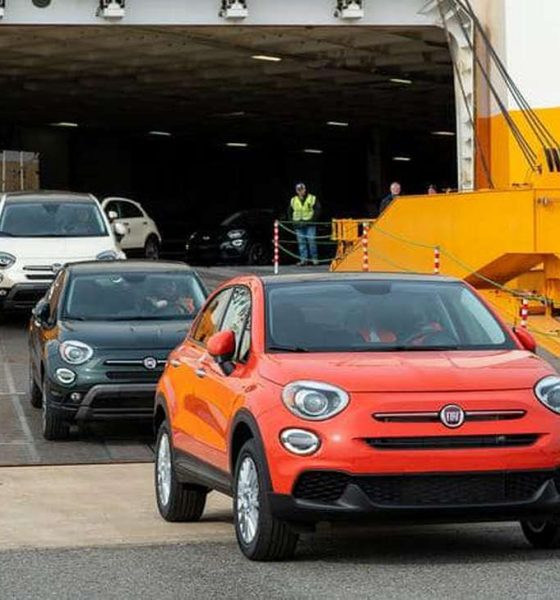
News
Tesla gives Fiat a wake up call: ‘fake’ electric cars can still manipulate EU emissions standards
New CO2 regulations set to take effect in Europe have several loopholes in place that could derail the goal of reducing new car emissions by 37.5% in the region by 2030, according to a study published by advocacy group Transport & Environment. In a worst-case modeling scenario, gaming of the rules could also result in almost two million fewer zero or low emissions vehicles coming to market between 2025 and 2030, and of those in the market, half might be plug-in hybrids built for compliance, not innovation.
In order to propel the creation of a battery electric auto industry in the region, European Union members and parties participating in the discussions over the new CO2 regulations included incentives in the agreement that were tied to specific vehicle sales. Auto manufacturers with 15% of their sales coming from zero and low emission vehicles by 2025 and 35% from 2030 onwards will have their CO2 targets reduced by a maximum of 5%. This effectively means a company’s new fleet-wide CO2 output would only need to be reduced to 34.4% by 2030 instead of 37.5%, as calculated in the study.
Companies have further been allowed to pool their fleets together to help reach these goals, something which Tesla has recently taken advantage of by partnering with Fiat Chrysler. As a manufacturer of zero-emission vehicles, counting Tesla’s fleet with Fiat’s lowers the average per-vehicle CO2 output, thus lessening the burden for Fiat to meet the emissions standards while Tesla profits from the deal.

On its face, the 5% trade-off for lower emissions standards would be the entry of new, more innovative clean energy vehicles on the market; however, the inclusion of plug-in hybrids in that calculation could be problematic and used to game the system. In order to qualify as a low emissions vehicle, a hybrid car only needs to be under a threshold of 50 g/km CO2 output during testing which assumes full use of the vehicle’s battery. Because most of these plug-in hybrids have very low battery ranges, they’re often not used in practice in favor of the internal combustion engine, thus increasing their real-world CO2 output to around 120 g/km.
The technology behind plug-in hybrids is less innovative and therefore cheaper to produce, so the financial appeal of producing more of these types of vehicles over battery-only electric vehicles is high. The Transport & Environment study estimates that this effect will lead to about 2 million fewer all-electric cars being produced in favor of the cheaper, ‘fake’ electric compliance hybrids.
Other loopholes in the EU regulations also contribute to a reduction in CO2 outcomes. Fourteen countries where non-existent or nascent low emissions vehicle markets were identified will receive nearly double the emissions credit for eco-friendly cars sold to encourage development in the regions.


Simply, a large manufacturer could register thousands of vehicles in one of these markets, acquire double credit for each vehicle, and then quickly sell the vehicles in an established market where demand is higher. When sold, the cars would technically be “used” for record keeping purposes, but new to consumers and presented that way. This would circumvent the point of developing a low emissions market in those countries, further limiting the expansion of low emissions car availability.
The EU member states where double credits apply are Ireland, Greece, Poland, Slovenia, Croatia, the Czech Republic, Slovakia, Bulgaria, Romania, Estonia, Latvia, Lithuania, Cyprus, and Malta.
The final (possible) loophole identified in the Transport & Environment study lies with the inclusion of Norway in the EU regional calculations. The country has not yet formally been included in the 2025/30 standards but is part of the 2020/1 standards currently in effect and will likely be included in the upcoming rules.
Norway is requiring 100% of its vehicles to have zero emissions by 2025, thus guaranteeing sales of those types of cars in a market where ICE vehicles are not competitive. Automakers could concentrate their sales in that region and make less effort to sell in the rest of Europe, all while still remaining compliant with the regulations. Reaching compliance in this manner is another way the intent of the coming CO2 reduction requirements can be manipulated.

The authors of the Transport & Environment study have laid out their proposals to overcome these loopholes, but considering that they were included to win the support of the auto industry in the region, further changes to the regulations seem unlikely. Also, the study could be taking an overly pessimistic view of the possible outcomes the loopholes could lead to.
Consumer markets, even without significant CO2-related regulation, are already showing trends towards increasing low emission vehicle demands, especially for battery electric vehicles like those sold by Tesla. This “Tesla Effect” has been noted by the upper echelons of legacy auto and several have committed to billions in electric fleet investments. Porsche is unveiling its first production electric vehicle, the Taycan, this September and has plans to retire its diesel-powered lineup and embrace electrification. Ford has also recently committed to electrifying its F-series, most notably the classic F-150, as well as invest $11 billion dollars to produce 40 electrified vehicles by 2022.

News
SpaceX reaches incredible milestone with Starlink program
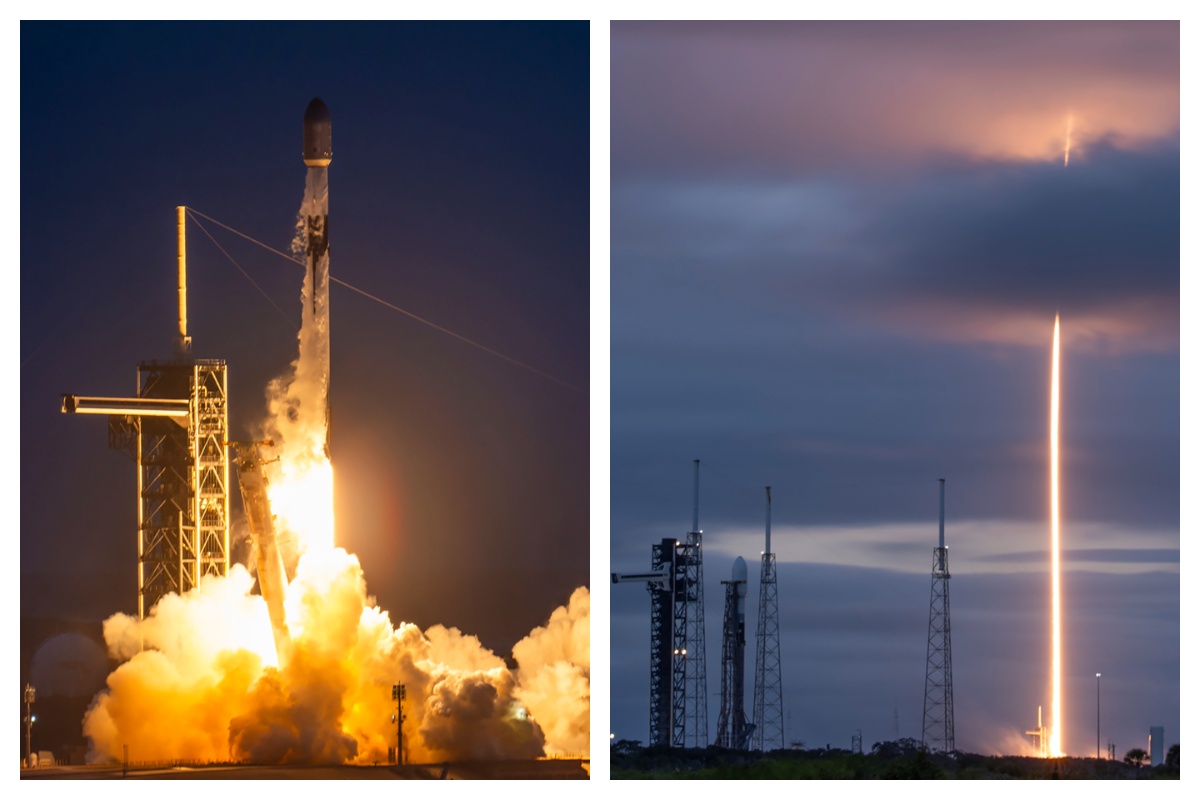
SpaceX reached an incredible milestone with its Starlink program with a launch last night, as the 3,000th satellite of the year was launched into low Earth orbit.
On Monday, SpaceX also achieved its 32nd flight with a single Falcon 9 rocket from NASA’s Kennedy Space Center.
The mission was Starlink 6-92, and it utilized the Falcon 9 B1067 for the 32nd time this year, the most-used Falcon booster. The flight delivered SpaceX’s 3000th Starlink satellite of the year, a massive achievement.
There were 29 Starlink satellites launched and deployed into LEO during this particular mission:
Falcon 9 launches 29 @Starlink satellites from Florida pic.twitter.com/utKrXjHzPN
— SpaceX (@SpaceX) December 9, 2025
SpaceX has a current goal of certifying its Falcon boosters for 40 missions apiece, according to Spaceflight Now.
The flight was the 350th orbital launch from the nearby SLC-40, and the 3,000 satellites that have been successfully launched this year continue to contribute to the company’s goal of having 12,000 satellites contributing to global internet coverage.
There are over five million users of Starlink, the latest data shows.
Following the launch and stage separation, the Falcon 9 booster completed its mission with a perfect landing on the ‘Just Read the Instructions’ droneship.
The mission was the 575th overall Falcon 9 launch, highlighting SpaceX’s operational tempo, which continues to be accelerated. The company averages two missions per week, and underscores CEO Elon Musk’s vision of a multi-planetary future, where reliable connectivity is crucial for remote work, education, and emergency response.
As Starlink expands and works toward that elusive and crucial 12,000 satellite goal, missions like 6-92 pave the way for innovations in telecommunications and enable more internet access to people across the globe.
With regulatory approvals in over 100 countries and millions of current subscribers, SpaceX continues to democratize space, proving that reusability is not just feasible, but it’s also revolutionary.
News
Tesla expands new Full Self-Driving program in Europe
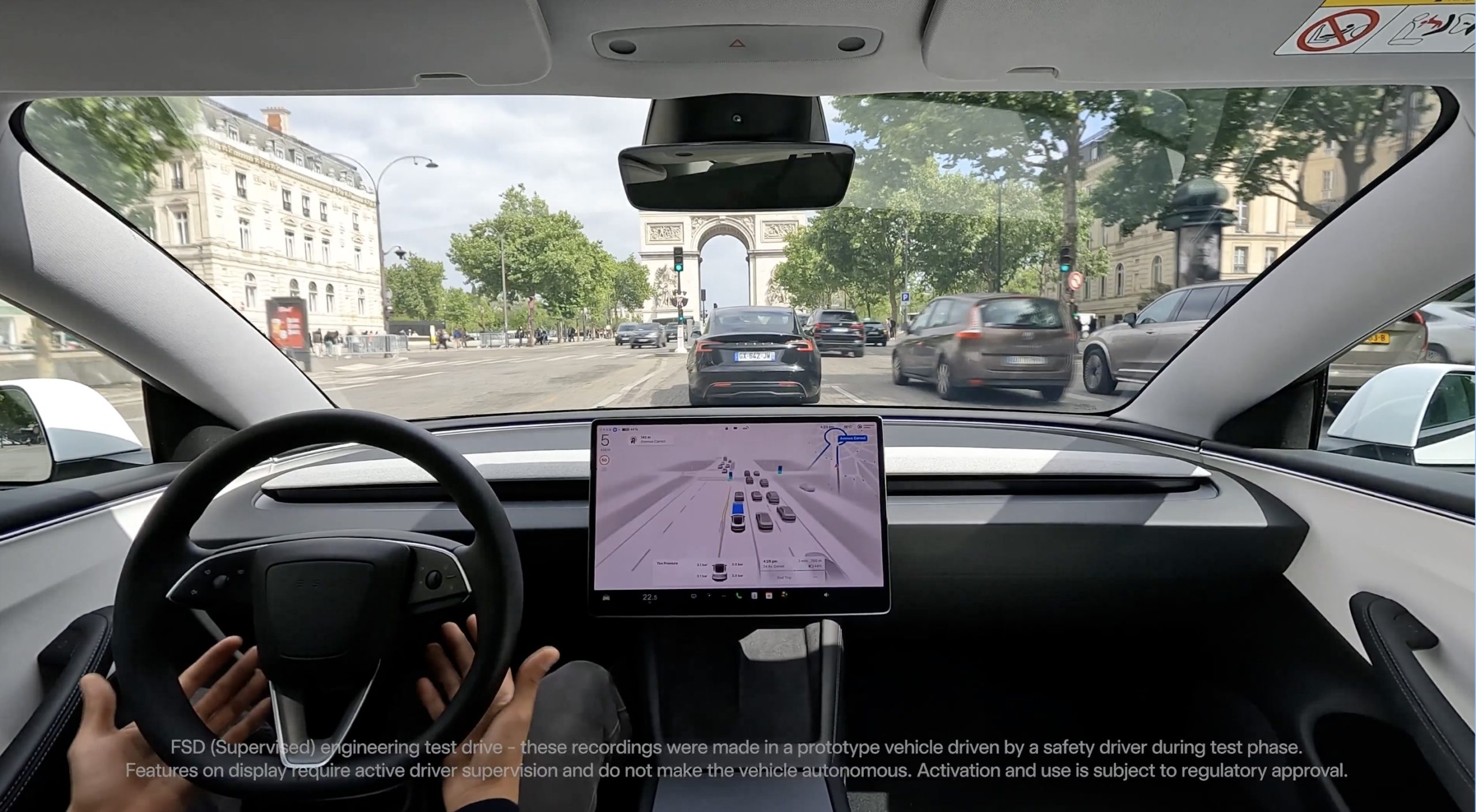
Tesla expanded its new Full Self-Driving program, which gives people the opportunity to experience the company’s suite, in Europe.
Tesla recently launched an opportunity for Europeans to experience Full Self-Driving, not in their personal vehicles, but through a new ride-along program that initially launched in Italy, France, and Germany back in late November.
People could experience it by booking a reservation with a local Tesla showroom, but timeslots quickly filled up, making it difficult to keep up with demand. Tesla expanded the program and offered some additional times, but it also had its sights set on getting the program out to new markets.
It finally achieved that on December 9, as it launched rides in Denmark and Switzerland, adding the fourth and fifth countries to the program.
Tesla confirmed the arrival of the program to Denmark and Switzerland on X:
Now available in Denmark & Switzerland
🇩🇰 https://t.co/IpCSwHO566 https://t.co/V2N5EarLNX
— Tesla Europe & Middle East (@teslaeurope) December 9, 2025
The program, while a major contributor to Tesla’s butts in seats strategy, is truly another way for the company to leverage its fans in an effort to work through the regulatory hurdles it is facing in Europe.
Tesla has faced significant red tape in the region, and although it has tested the FSD suite and been able to launch this ride-along program, it is still having some tremendous issues convincing regulatory agencies to allow it to give it to customers.
CEO Elon Musk has worked with regulators, but admitted the process has been “insanely painful.”
The most recent development with FSD and its potential use in Europe dealt with the Dutch approval authority, known as the RDW.
Tesla says Europe could finally get FSD in 2026, and Dutch regulator RDW is key
Tesla said it believes some regulations are “outdated and rules-based,” which makes the suite ineligible for use in the European jurisdiction.
The RDW is working with Tesla to gain approval sometime early next year, but there are no guarantees. However, Tesla’s angle with the ride-along program seems to be that if it can push consumers to experience it and have a positive time, it should be easier for it to gain its footing across Europe with regulatory agencies.
News
Tesla ramps hiring for Roadster as latest unveiling approaches
Tesla published three new positions for the Roadster this week, relating to Battery Manufacturing, General Manufacturing, and Vision Engineering.
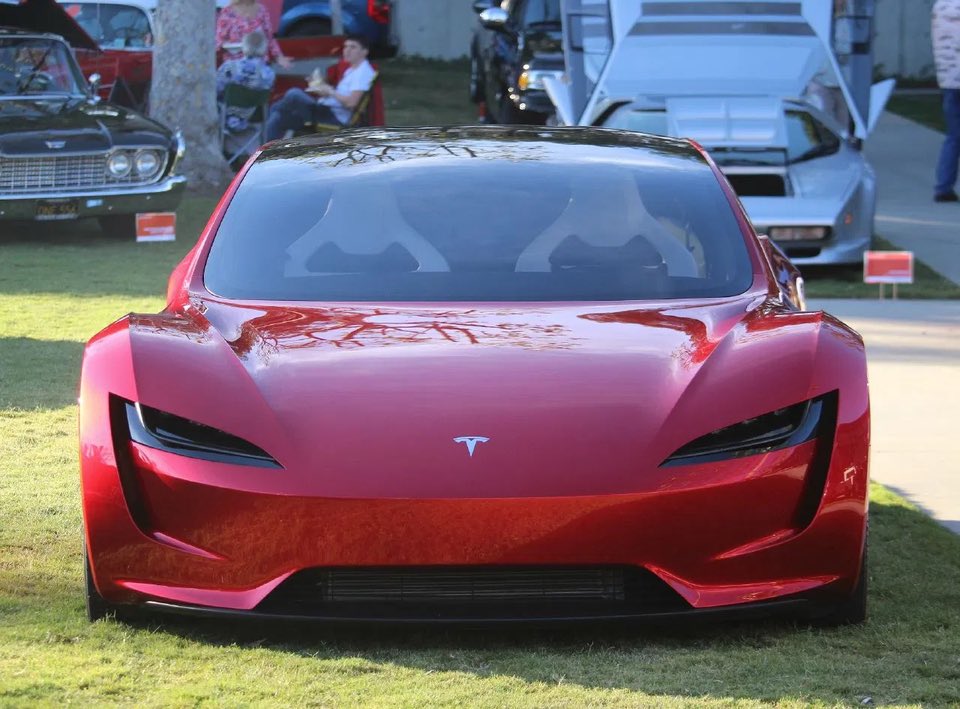
Tesla is ramping up hiring for positions related to the Roadster program, the company’s ultra-fast supercar that has been teased to potentially hover by CEO Elon Musk.
The company seems to be crossing off its last handful of things before it plans to unveil the vehicle on April Fool’s Day, just about four months away.
Tesla published three new positions for the Roadster this week, relating to Battery Manufacturing, General Manufacturing, and Vision Engineering. All three are located in Northern California, with two being at the Fremont Factory and the other at the company’s Engineering HQ in Palo Alto.
Technical Program Manager, Battery Manufacturing
Located in Fremont, this role specifically caters to the design of the Roadster to factory operations. It appears this role will mostly have to do with developing and engineering the Roadster’s battery pack and establishing the production processes for it:
“You will foster collaboration across design engineering, manufacturing, quality, facilities, and production to align with company priorities. Additionally, you will understand project opportunities, challenges, and dependencies; translate scattered information into concise, complete messages; and communicate them to every team member. As the business process development lead, you will develop, maintain, and implement tools and processes to accelerate battery manufacturing execution, achieve cross-functional alignment, and deliver highly efficient systems.”
Manufacturing Engineer, Roadster
Also located in Fremont, this role also has to deal with the concept development and launch of battery manufacturing equipment. Tesla says:
“In this role, you will take large-scale manufacturing systems for new battery products and architectures from the early concept development stage through equipment launch, optimization, and handover to local operations teams.”
Manufacturing Vision Engineer, Battery Vision
This position is in Palo Alto at Tesla’s Engineering Headquarters, and requires the design and scale of advanced inspection and control systems to next-generation battery products:
“You’ll work on automation processes that directly improve battery performance, quality, and cost, collaborating with world-class engineers in a fast-paced, hands-on environment.”
Developing and deploying 2D and 3D vision and measurement systems from proof-of-concept to deployment on high-volume battery manufacturing lines is part of the job description.
Roadster Unveiling
Tesla plans to unveil the Roadster on April 1, and although it was planned for late this year, it is nice to see the company put out a definitive date.
Musk said on the Joe Rogan Experience Podcast in late October:
“Whether it’s good or bad, it will be unforgettable. My friend Peter Thiel once reflected that the future was supposed to have flying cars, but we don’t have flying cars. I think if Peter wants a flying car, he should be able to buy one…I think it has a shot at being the most memorable product unveil ever.”
Production should begin between 12 to 18 months after unveiling, so we could see it sometime in 2027.








